How to choose fuel for a biofireplace: a comparative overview of types of fuel + analysis of popular brands
The fireplace with the prefix “bio” works great in city apartments. The device does not require permits, a chimney, a room for storing fuel. The effective unit does not recycle traditional firewood. So what does he need for burning? Agree, you need to understand the issue if you plan to get an environmentally friendly fireplace.
We will tell you in detail how to choose the right fuel for a biofireplace. Here you will find out what kind of fuel is required for its stable and safe operation, what are the advantages of its application. The article presented to your attention introduces popular brands of fuel.
A detailed description of the types of fuel used to breed and maintain fire in bio-fireplaces is presented to your attention. The recipe for self-preparation of the simplest fuel is presented and meticulously analyzed. Recommendations are given for refueling and igniting a fireplace, the observance of which will eliminate the occurrence of threatening situations.
The content of the article:
Types of environmentally friendly biofuels
The prefix “BIO” on labels is now often added based on the rules of successful marketing. The issues of preserving ecology and purity are in vogue today all over the planet. Bioproducts, biocosmetics, detergents, treatment and energy biostations, and even dry closets. It came down to fireplaces and fuel to them.
Constructively biofuel fireplaces equipped with a standard burner and a tank for liquid fuel. Adjustment of the size of the flame and the rate of combustion of the fuel is carried out by means of a damper.
If it is completely closed, then the fire in the bio-center simply goes out by itself. In general, a biofireplace is a great way to heat a room and add a touch of cosiness to it from the sparks of a bonfire.

Obtaining biofuels for such a fireplace involves the use of renewable natural resources, environmentally friendly technologies and raw materials in production.Plus, burning it should not give harmful emissions. Humanity can not do without combustible fuel. But we can do it less harmful.
Exist three types of biofuels:
- Biogas.
- Biodiesel
- Bioethanol
The first option is a direct analogue of natural gas, only it is not extracted from the bowels of the planet, but is produced from organic waste. The second is done by processing various oils obtained by squeezing oil plants.
As such, the fuel for bio-fireplaces is the third option - bioethanol. Biogas is mainly used for the generation of heat and electricity on an industrial scale, and biodiesel is more suitable for automotive internal combustion engines.
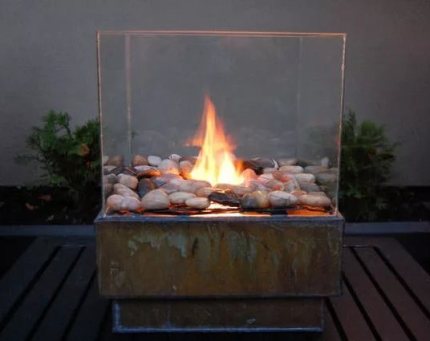
Home fireplaces are most often fueled with denatured alcohol bioethanol. The latter is made from sugar (cane or beetroot), corn or starch. Ethanol is ethyl alcohol, which is a colorless and flammable liquid.
But most importantly, during combustion, it does not emit odors, carbon monoxide and soot. Simply ideal for urban apartments in which it is almost impossible to equip a chimney.
To those who wish make bio fireplace Do it yourself with a walkthrough, which we recommend that you read it.
Fuel for a biofireplace
The use of smokeless bioethanol eliminates the need for an exhaust pipe, which often consumes up to 60% of the thermal energy generated in the furnace. All heat resulting from fuel combustion remains in the room.
From this point of view, the effectiveness of a biofireplace is much higher than that of a conventional fireplace. The heat transfer of the bio-foc reaches 95%. Plus, a flammable liquid in itself has a higher calorific value than wood. WITH calorific value a variety of fuels will familiarize you with our recommended article.

During combustion, bioethanol decomposes into steam and carbon monoxide ("bubbles in soda"), while generating quite large amounts of heat. No carbon monoxide and soot. The whole process takes place without toxic secretions and unpleasant amber.
Carbon dioxide in small quantities is harmless. It is even used in the food industry. However, you should not refuse from regular airing.
The resulting steam also slightly humidifies the air in the room with a burning bio-fireplace. The same electric radiator only dries it. In this, the eco-fireplace outperforms all heaters that are powered by electricity or coolant. But it gives less heat and as a result is not considered as a heating device.
The composition and characteristics of the fuel
Biofuels are not just alcohol. It contains various additives that change the color of the flame, add odors and make the liquid unsuitable for “accidental” use inside. And the last moment concerns not only the attempts of drinking alcohol by adults.
All manufacturers add to the bioethanol bitrex that is very bitter in taste. This almost completely eliminates poisoning with liquid fireplace fuel for children who are able to find and try anything. When trying to drink ethanol with bitrex, the child will at least spit it out because of bitterness in the mouth. And often, such a drink also causes vomiting.
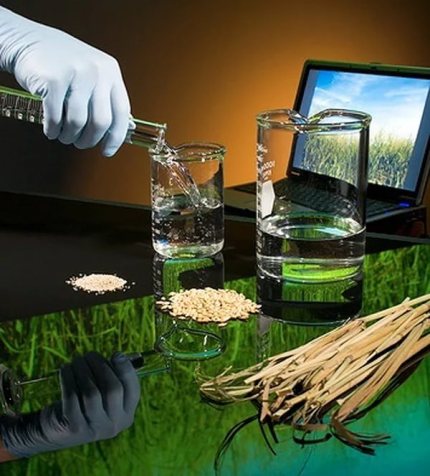
The composition of the fuel for biofireplaces is present:
- Ethyl alcohol (95%).
- Water (4%).
- Solvent methylethicletone (about 0.5%).
- Additives for smell and color (about 0.5%).
- Denaturing bitrex (about 0.01%).
Pure biofuels do not produce odors during combustion. But there are chimney fluids in which perfumes are specially added. Burning in a biofireplace, such fuel can emit the aroma of needles, coffee, birch or maple wood, etc.
But it is worth remembering that the fragrance requires more intensive ventilation. You will have to ventilate the room more often, otherwise you can get tired of an excess of aromas. Everything should be in moderation.
There are also variations of flammable liquids with different flame colors (red, orange, green). To choose the right biofuel, just read the label on the bottle carefully.
The full composition, additives, and heat transfer, and a shade of flame are always prescribed there. And if you need a “crack of firewood”, then you need to look for an option with sea salt. It burns slightly when burning, creating the illusion of using real logs.
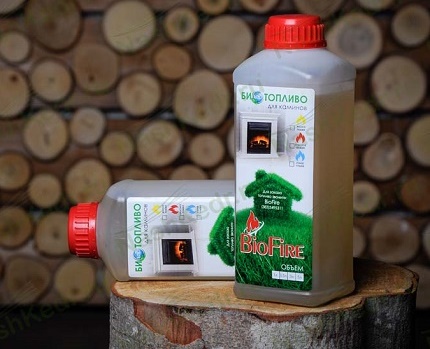
Advantages and fuel consumption
Among the many advantages of using biofuel, it is worth highlighting:
- lack of soot and ease of cleaning of the burner elements;
- high safety in the issue of the occurrence and spread of fire;
- the ability to control the intensity of fuel combustion;
- almost one hundred percent heat transfer;
- humidification of room air due to the release of water when heating ethanol;
- Convenience of storing liquid fuel in closed bottles.
The biofireplace itself can be installed in any part of the room. It is lightweight and mobile. If necessary, such a fireplace is transferred to another room, like a conventional electric heater.
Only the bio-hearth has no wires and it does not need to arrange a small log of firewood nearby to constantly put firewood into the firebox. I filled the tank, lit the burner, adjusted it, and then sit and enjoy the heat and the kind of flame.

When one liter of liquid bioethanol is burned, about 3.5–6 kWh of thermal energy is released. The tank for most models of fireplaces for it is designed so that the flame without human intervention on one fill is maintained for at least 4 hours.
Some modifications of such equipment can work up to 30 hours. But here a lot depends on the height and width of the flame. A single tongue is one thing, and a wall of fire in a wide hearth is another.
The biofuel is poured into the fireplace tank exclusively when the burner is extinguished. You must first put out the fire and wait for the cooling of the elements of the hearth (at least 15 minutes), and only then add the flammable liquid. Otherwise, it can spill and catch fire not where it should be.
The fuel consumption in most biofireplaces is around 0.35–0.5 liters / hour. For its ignition, a special metal lighter is used. It is strictly forbidden to use matches, paper or other combustible materials for this.
Overview of popular brands
Biodiesel for cars is mainly produced in America (USA, Canada and Brazil), as well as India, China and Europe. This is often touted as caring for the environment and expanding the use of alternative energy sources.
But there is one caveat - for the production of large volumes of biodiesel, large volumes of organic matter (corn, rape, sugarcane) are required. However, with the large-scale cultivation of these crops, a lot of water is consumed and, again, fuel for agricultural machinery.
The result is quite ambiguous. It is one thing when waste is recycled to make such a fuel, and the processing of plants specially grown for this purpose is quite another.
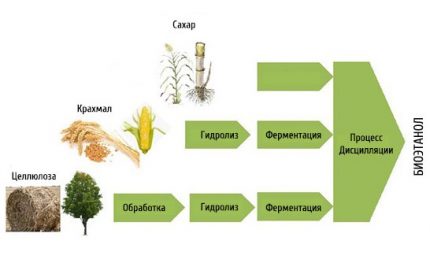
The situation with ethanol biofuel is somewhat different. It is produced on a much smaller scale. This is mainly done in Europe, but Russia also has its own factories. For the production of this biofuel, raw materials of plant origin are also needed, but not in such enormous volumes as in the case of the automobile counterpart.
In domestic stores, fireplace biofuels can be selected from the following brands:
- Kratki BioDECO (Poland).
- InterFlame (Russia).
- BioKer (Russia).
- Planika Fanola (Germany).
- Vegeflame (France).
- Bionlov (Switzerland).
- Bioteplo Slimfire (Italy).
The choice is quite extensive. The price per liter ranges from 260-600 rubles. The cost often depends on the presence / absence and combination of additional additives. Some aromatic oils are quite expensive. Although they are present in the composition of biofuels in the smallest proportions, they still affect the price.
Self-made fuel
For the industrial production of ethanol, the basis of biofuels, hydration (hydrolysis) or fermentation technologies are used. In the first case, alcohol is obtained from cellulose. As raw materials, straw or wood is used here.
The second option involves microbiological fermentation of organics under the influence of bacterial and yeast enzymes. Raw materials for such industries are raw sugar, starch, rice, corn, grapes, etc.
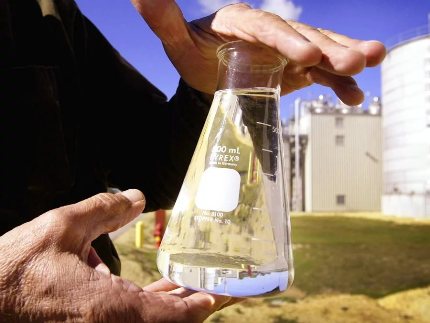
To do ethyl alcohol yourself by fermentation or in another way at home is an ungrateful, difficult and costly affair. It’s easier to go and buy it in its purest form in a pharmacy. For biofuel manufacturing it is needed without additives and impurities. To achieve the desired concentration and cleanliness of the house, without having a chemical laboratory, is almost impossible.
To make 1 liter of biofuel for the fireplace yourself, you will need:
- 96-degree liter of alcohol;
- 50-10 ml of refined gasoline (as in lighters).
Ideally, the second component should be transparent and odorless. It is needed to give the resulting fuel an orange flame. Gasoline is also required so that the alcohol does not immediately flare up when burning, and then burns with an even flame.
It is best to mix the composition immediately before pouring a biofireplace into the tank. The liquids used in the manufacture of fireplace gas have a different density.
If they are left for several hours after preparing the mixture in any container, then they will begin to separate. Gasoline will stand out from alcohol and turn into a separate film floating in it.
When using such self-made biofuel in the room, a slight alcohol smell may appear. It is difficult to get drunk on him or poison himself.
Plus it quickly erodes. But the “flavor” of alcohol causes unpleasant associations in many. To get rid of such an amber, a few drops of one or another aromatic oil should be added to the fuel when mixing.
Conclusions and useful video on the topic
Video # 1. How to pour fuel into a biofireplace:
Video # 2. The simplest biofuel tabletop fireplace candle:
Video # 3. Making fuel for a bio fireplace with your own hands - from distillation of alcohol to mixing with gasoline:
A small bio fireplace can be installed both in the apartment and in the office. It is safe and will revive any interior. When choosing liquid fuel for it, the main attention should be paid to the availability of certificates from the seller for specific products.
All these liquids have almost the same composition. They differ only in aromatic additives. Therefore, the main thing - alcohol should be of high quality and clean, and not a fake with a bunch of harmful impurities.
Please write comments in the block below. Tell us about your chosen type of fuel for a compact fireplace and how you use it. Ask questions, share useful information for visitors, publish photos on the topic of the article.

 DIY bio-fireplace burner: instructions and manufacturing tips
DIY bio-fireplace burner: instructions and manufacturing tips 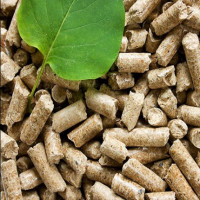 Types of biofuels: a comparison of the characteristics of solid, liquid and gaseous fuels
Types of biofuels: a comparison of the characteristics of solid, liquid and gaseous fuels 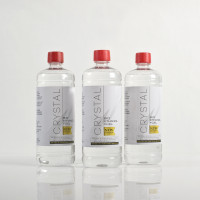 Biofuel for the fireplace: types of biofuel, its properties + how to choose and how to do it yourself
Biofuel for the fireplace: types of biofuel, its properties + how to choose and how to do it yourself  How to make a bio fireplace with your own hands: device, diagrams and step-by-step assembly instructions
How to make a bio fireplace with your own hands: device, diagrams and step-by-step assembly instructions  Fireplaces on biofuel: device, types and principle of action of bio-fireplaces
Fireplaces on biofuel: device, types and principle of action of bio-fireplaces 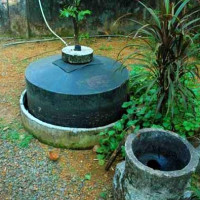 How to get biogas from manure: an overview of the basic principles and design of a production plant
How to get biogas from manure: an overview of the basic principles and design of a production plant  How much does it cost to connect gas to a private house: the price of organizing gas supply
How much does it cost to connect gas to a private house: the price of organizing gas supply  The best washing machines with dryer: model rating and customer tips
The best washing machines with dryer: model rating and customer tips  What is the color temperature of light and the nuances of choosing the temperature of the lamps to suit your needs
What is the color temperature of light and the nuances of choosing the temperature of the lamps to suit your needs  Replacement of a geyser in an apartment: replacement paperwork + basic norms and requirements
Replacement of a geyser in an apartment: replacement paperwork + basic norms and requirements
For a bio-fireplace, bioethanol is the one that flooded everything. Each time we buy a canister with a different color of the flame, it turns out interesting and does not bother. But flavored took only once, it turned out that being in a room of 18 square meters. It’s impossible in half an hour, and there’s no talk of sleep, it is in the hope that it will do better in the country, there is more room there, where it may turn out not so choking.
I always dreamed of a real wood burning fireplace in my own house. But my husband bought an apartment, so I had to look after a biofireplace. It works on liquid fuel and does not require the arrangement of additional elements. The fireplace can easily be moved to another room. At one time I was confused by the smell, changed the aroma and began to ventilate the apartment more often. Most importantly, the biofireplace is completely safe.
I also have a problem with a strong foul odor emitted by combustible biofuels. Are there any ways to get rid of it, except for the hood? As far as I understand, it is not ethanol itself that smells, but additives that interfere with it for color. Maybe there is some kind of smellless brand?